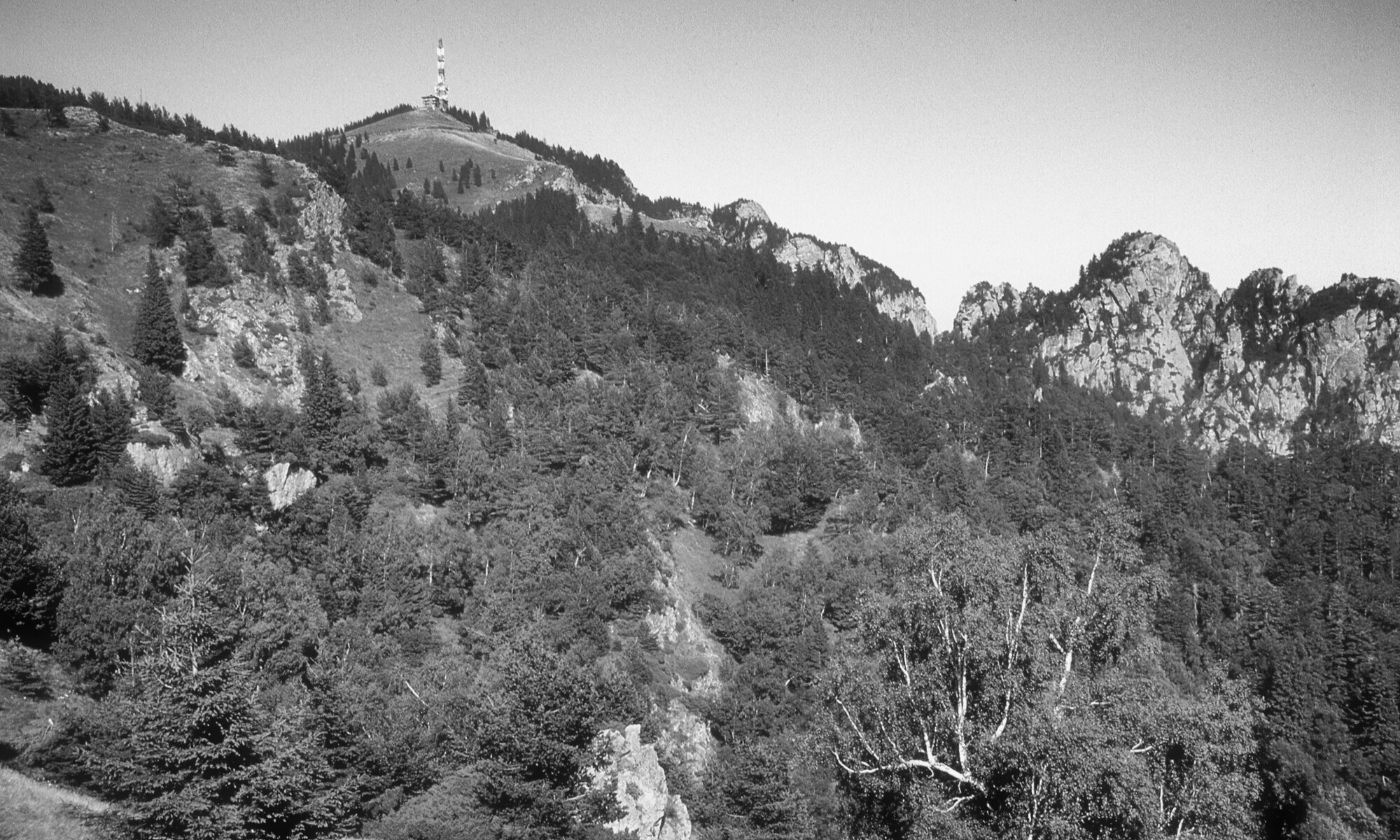THE BIRCHWOOD MOUNTAINS. Small and steep, the southernmost tip of the Făgăraş rises thirteen hundred meters above the Olt River valley. Below, barefoot locals dwell in solitary homesteads. The air smells of summer hay, and rows of plum trees climb the mountainsides. Beyond them lie beech groves, pinewood forests, fir thickets, scree slopes, birch woodlands, plains, pasturelands, and craggy cliffs, dark and dangerous. Mountain huts are hemmed by nettle thickets so dense one was christened Stinging Nettle Shanty. Our descent from the summit – a mix of luck and misfortune. We find ourselves in a parched and wild ravine where water must roar in spring. Now dusty and dry, white rocks crumble underfoot, the ground a tangle of branches, trees, stones, stumps, and tree bark. Like nothing I’ve ever seen at home. The ravine descends ever steeper until, with a great leap, it falls away altogether, an arid waterfall. The Olt flows below it, banks abounding in blackberry bushes.
Once in the Cozia Mountains, do not forget to visit the ancient Orthodox monasteries. Not far from the dry ravine stands the cloister of Turnu, accessible only by footpath. There you will meet only locals, quiet whispers, and kindness. I sit, gazing quietly at painted crosses and pictures of levitating saints as the sun sets. How heavenly the smell of fragrant candles, how great my shame for sitting there. Two days before, I bathed in the sulfuric black mud of Ocna Sibiu, which had left me smelling of hellfire and brimstone. In vain had I washed in Sibiu’s deep salt pits with water too thick to drown in. In vain had I tried to cleanse myself of that smell.
And here I sat in the Turnu monastery smelling like Satan himself.
